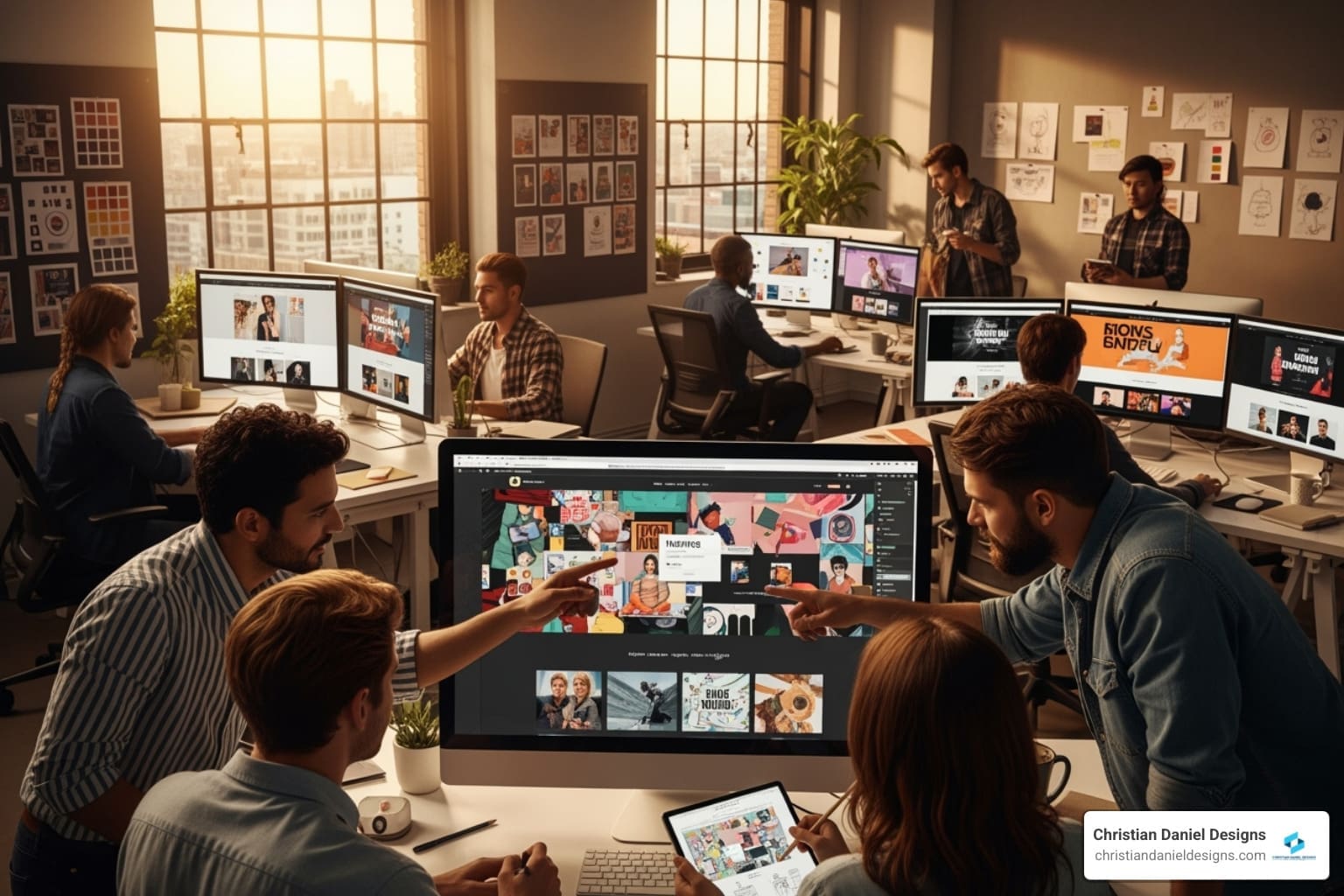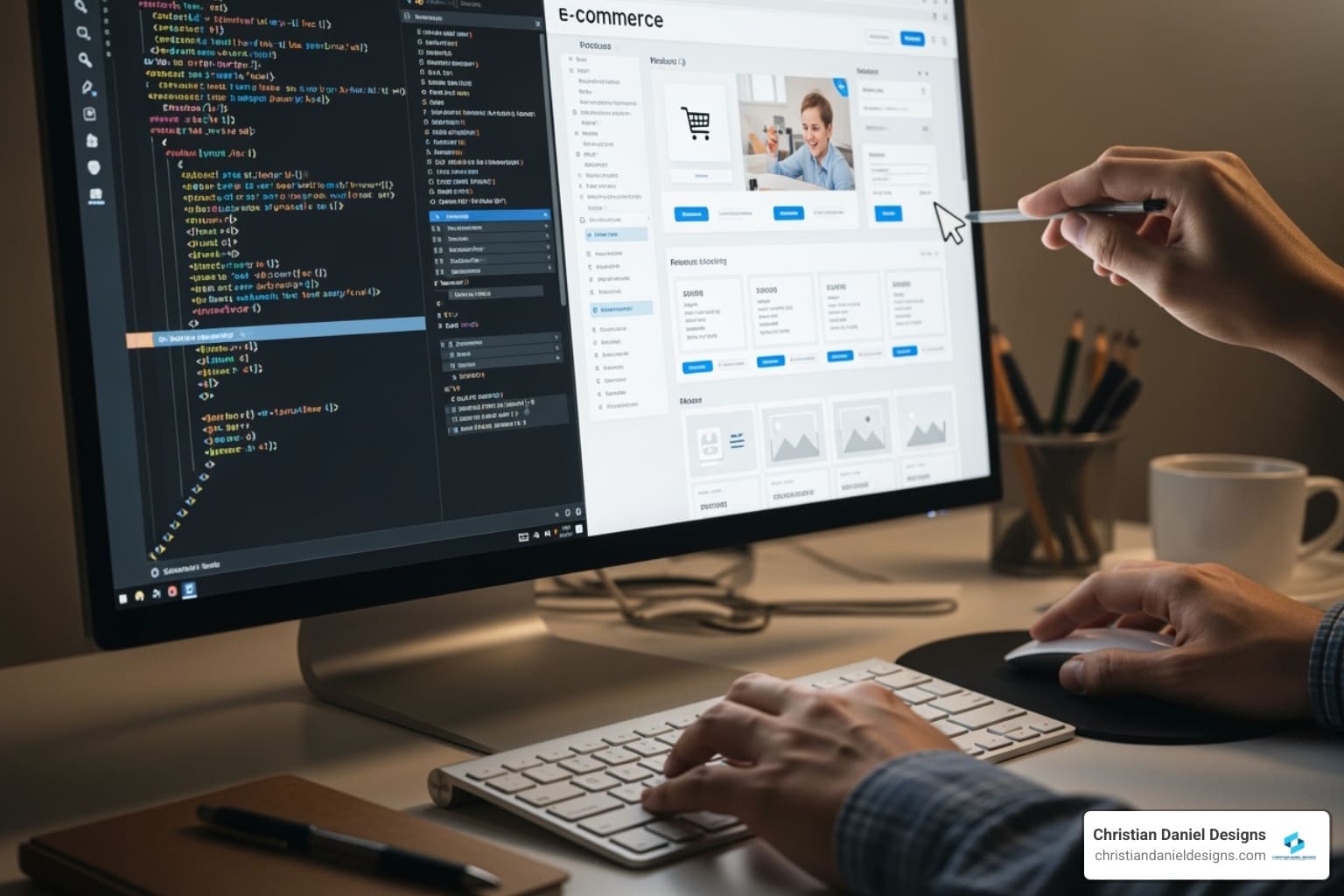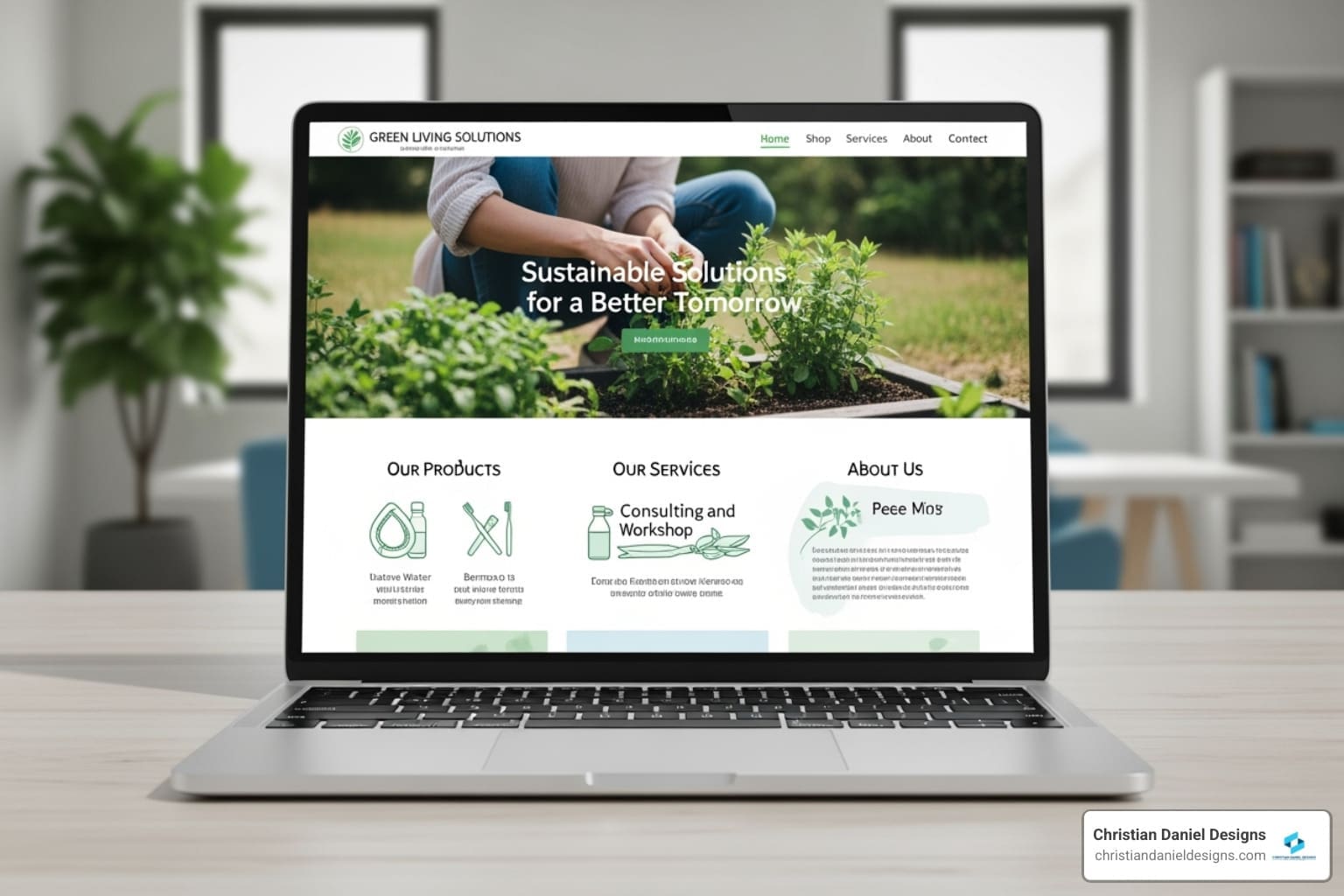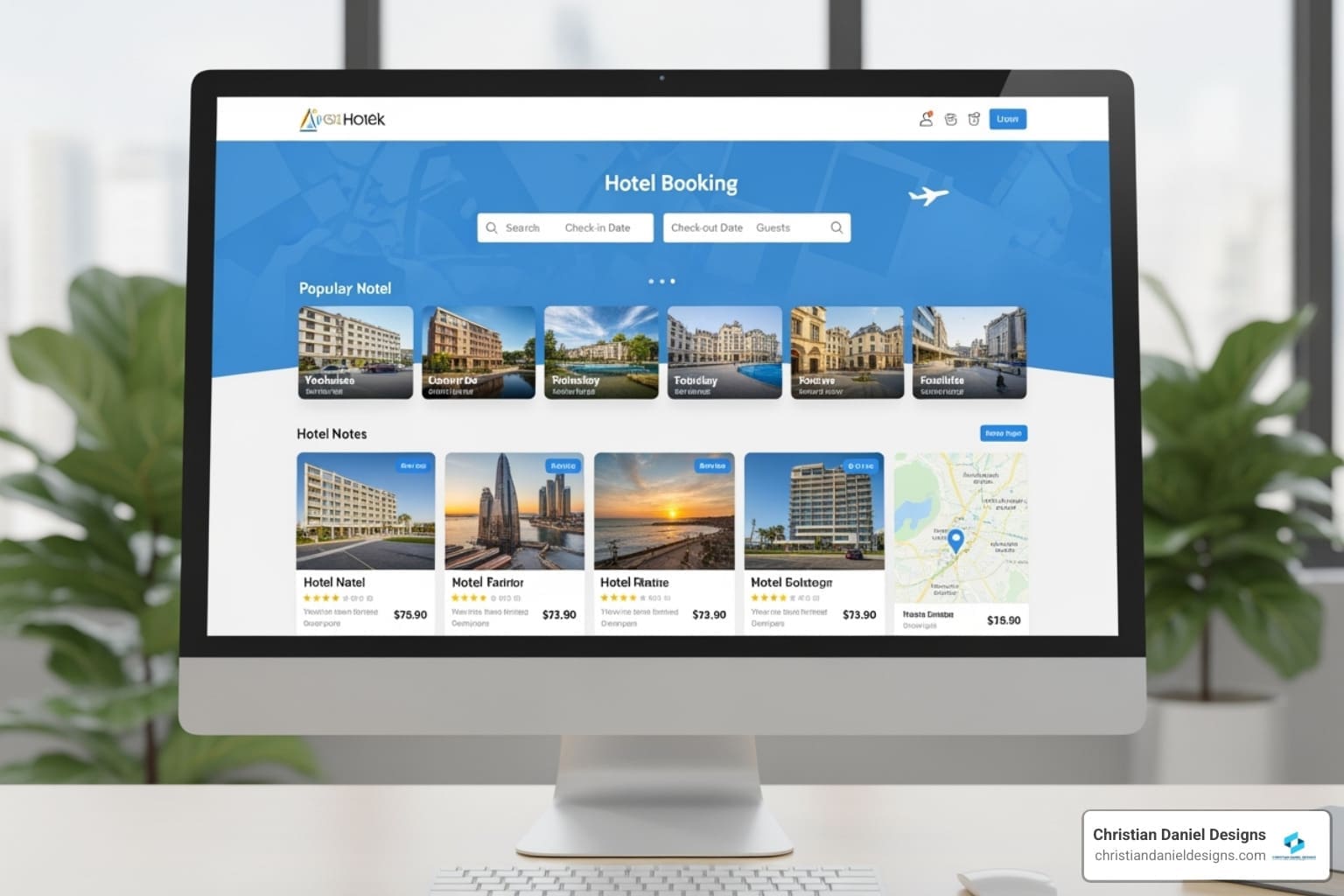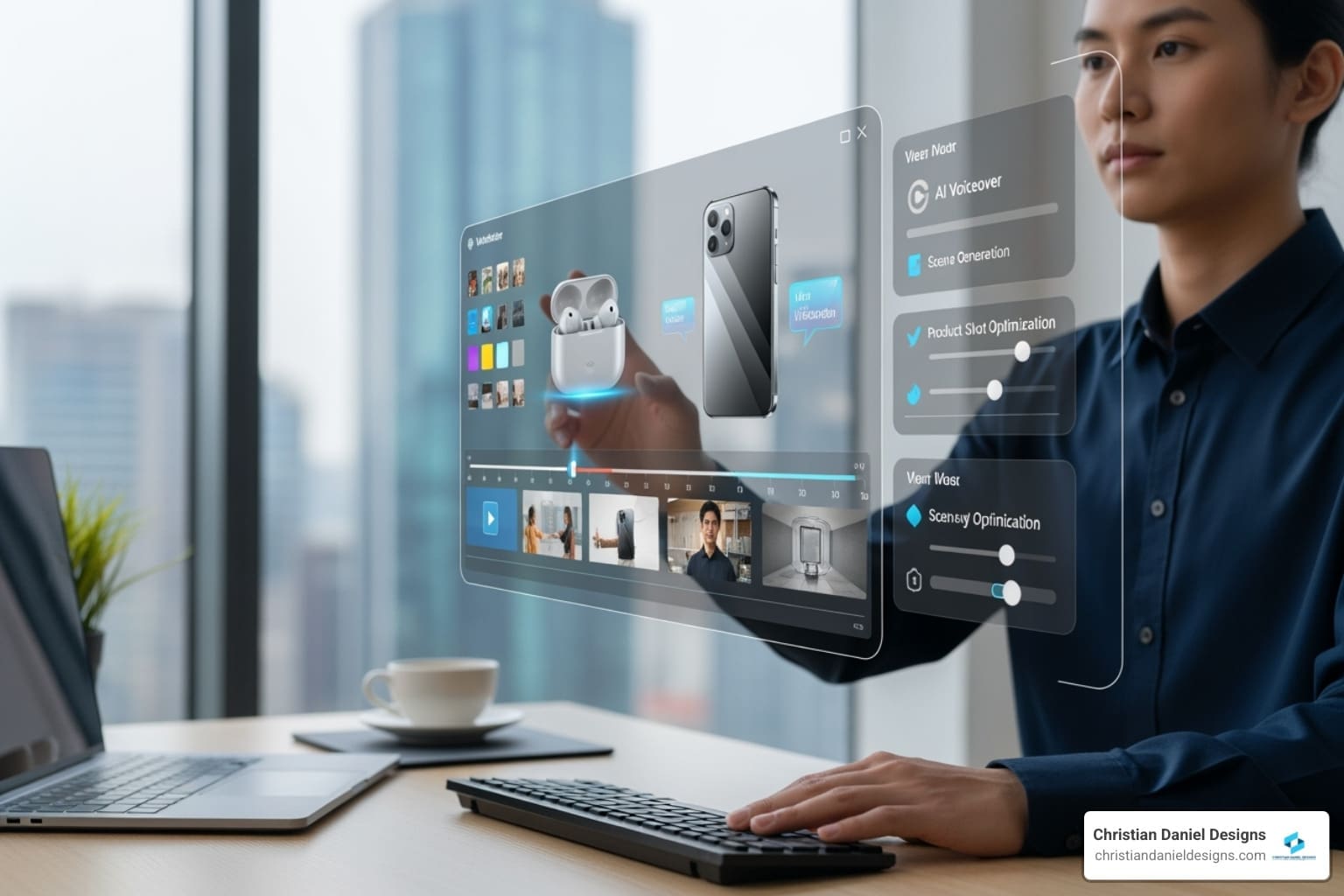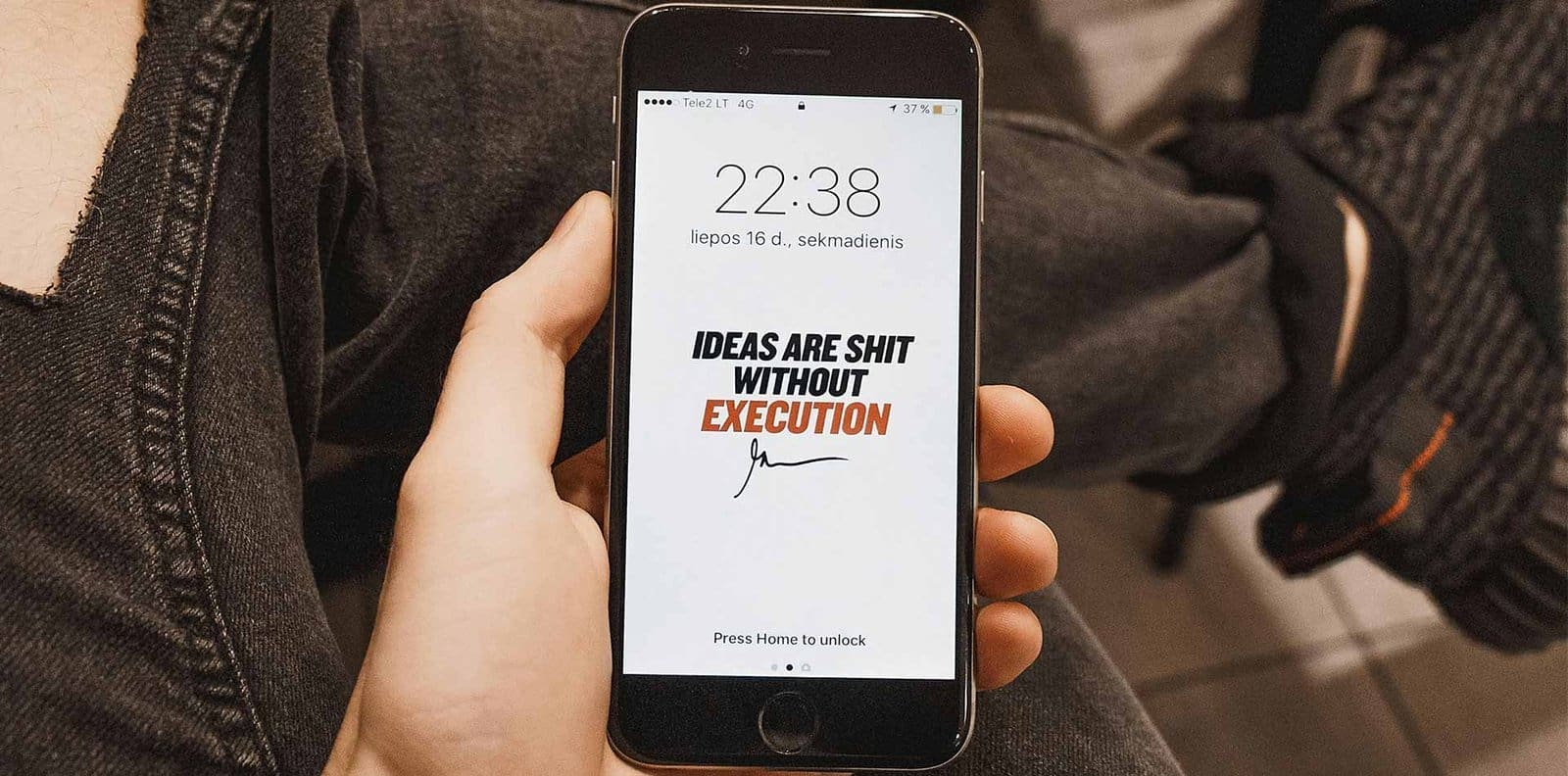Website Designs: 2024’s Great Secrets
Why Website Designs Can Make or Break Your Business
Website designs are your digital storefront. Research shows users form an opinion about your site’s credibility in just 5.59 seconds, and 75% judge your business on design alone. A great design can turn visitors into customers; a poor one sends them to your competitors.
Quick Answer: What Makes Great Website Design?
Great website designs combine these essential elements:
- User-Centric Experience – Easy navigation and intuitive layouts
- Mobile-First Approach – Responsive design that works on any device
- Fast Loading Speed – Sites loading in 2 seconds see 7x more conversions
- Clear Calls-to-Action – Strategic CTAs that guide users
- Visual Hierarchy – Smart use of typography, color, and spacing
- Brand Consistency – A cohesive look that builds trust
- SEO Optimization – Design choices that help you rank higher
The stakes are high: 88% of online consumers won’t return to a site after a bad experience. With over 60% of web traffic now on mobile, your site must perform flawlessly everywhere. Good UX can increase conversion rates by up to 400%, while poor design costs you revenue.
I’m Christian Daniel, founder of Christian Daniel Designs. For over 20 years, I’ve created custom website designs for hospitality, dining, and creative businesses. My approach blends visual storytelling with strategic impact to deliver sites that don’t just look great, but drive measurable results by converting visitors into loyal customers.
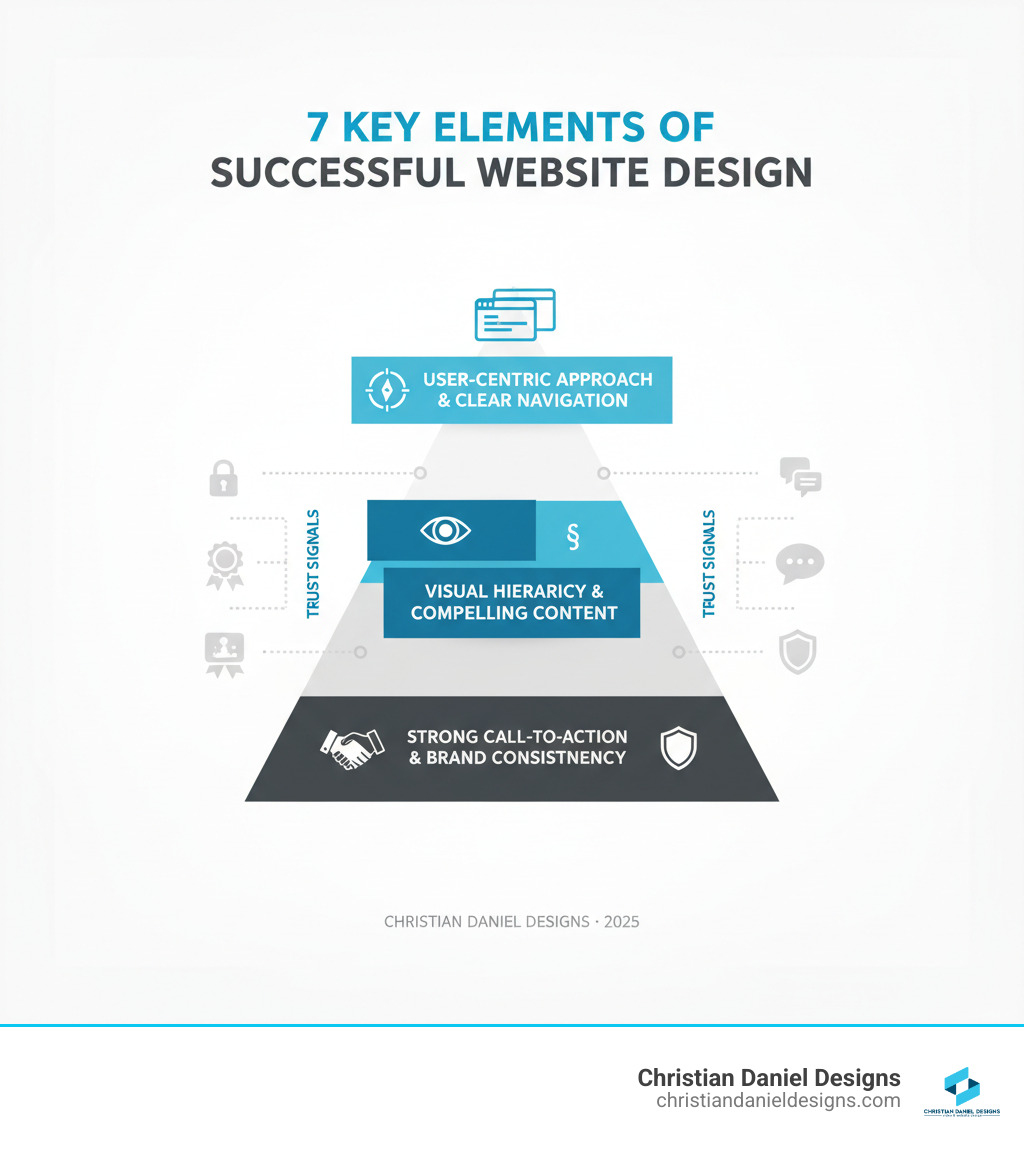
Essential website designs terms:
The Foundation: Key Elements of a Successful Website Design
Think of your website as a well-orchestrated symphony. For website designs, performance is just as important as appearance. After two decades of designing sites, I’ve learned that success always begins with a user-centric approach—putting your audience at the heart of every decision.
Here are the core elements I build into every project:
- Clear navigation is non-negotiable. If visitors can’t find what they’re looking for, they’ll leave. I ensure menus are intuitive and logical.
- Visual hierarchy guides the visitor’s eye. Using size, color, and placement, I emphasize the most important information first.
- Compelling content keeps people engaged. High-quality text, images, and videos are essential for telling your story and connecting with your audience.
- A strong call-to-action (CTA) is where the magic happens. I position clear, prominent CTAs like “Buy Now” or “Contact Us” strategically to drive conversions.
- Brand consistency builds trust. A cohesive look across every page, using your brand’s colors, fonts, and tone, creates recognition and confidence.
- Trust signals reassure visitors. Secure payment badges, client testimonials, and clear contact info tell people it’s safe to do business with you.
When woven together, these elements create a powerful online presence that drives measurable results. For a deeper dive, check out my insights on Conversion-Focused Web Design.
How Design Impacts User Experience and Conversions
The impact of good website designs on user experience (UX) and conversions is undeniable. A well-designed site reduces bounce rates, increases session duration, and builds customer trust. In fact, good UX can increase conversion rates by up to 400%. I’ve seen small tweaks to navigation or checkout flows lead to massive improvements in lead generation for my clients.
To achieve this, I use data-driven techniques. A/B testing different design elements—like headlines or button colors—tells me what truly resonates with your audience. I also use heatmaps to see where users are clicking and scrolling, providing invaluable insights that allow me to fine-tune designs for optimal performance. For e-commerce, a streamlined checkout process can reduce cart abandonment, turning potential sales into actual revenue.
Best Practices for Website Navigation and UI
Effective navigation and user interface (UI) act as a friendly guide for your website. My core principles are built on years of experience.
Simplicity is my north star. A clean, uncluttered menu with five to seven main items is almost always best. I stick to an intuitive layout because users expect conventions like the logo on the top-left and navigation on the top-right. Fighting these standards only causes confusion.
Hamburger menus are great for mobile but should be used judiciously on desktops as they can hide navigation. I use footer navigation for secondary links like privacy policies to keep the main menu clean. For larger sites, breadcrumbs and a prominent search functionality are essential for helping users find their way.
On mobile, touch-friendly targets are critical. Buttons and links must be large enough (at least 44×44 pixels) to be tapped easily. I also ensure my website designs adhere to accessibility standards, making them usable for everyone. This isn’t just good ethics—it’s good business. Learn more in my guide to ADA Compliant Web Design.
2024’s Hottest Website Design Trends
The world of website designs is always evolving, which is what makes my job so exciting. The latest trends aren’t just for show—they genuinely improve user interaction and help businesses connect with their audiences.
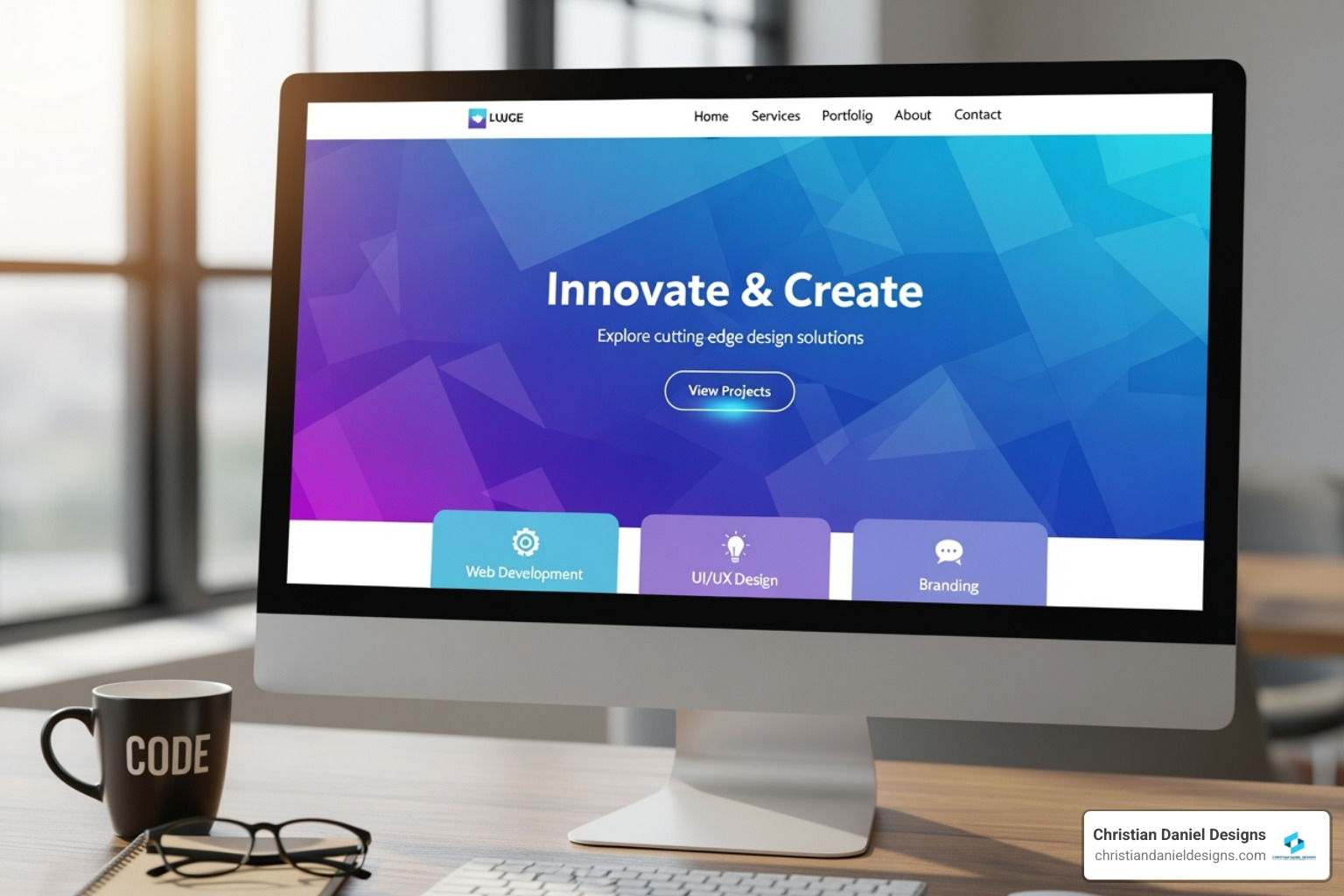
Here are some of the key trends I’m incorporating into my work:
- Minimalism continues to reign with clean layouts and ample white space, creating sophisticated, user-friendly experiences.
- Bold typography makes a statement, commanding attention and communicating brand personality instantly.
- Immersive 3D elements are moving web design beyond flat screens into tangible, interactive spaces that encourage exploration. I’ve written more about this in my article on Immersive Website Experiences.
- AI-generated visuals are amplifying creativity, allowing for the rapid creation of unique imagery.
- Micro-interactions, the subtle animations on hover or click, make websites feel polished, responsive, and premium.
- Dark mode has become an expected feature, reducing eye strain and offering a sleek, modern look.
- Scrollytelling transforms static pages into dynamic narratives that unfold as the user scrolls, creating a captivating journey.
The Rise of AI in Modern Website Design
Artificial Intelligence is no longer science fiction; it’s a powerful collaborator in my design process. While I was initially skeptical, AI-powered tools are democratizing web creation in exciting ways.
AI-powered design tools like Squarespace’s Blueprint AI can generate personalized layouts in minutes, freeing me to focus on high-level strategy and refinement. Automated copy generation can help draft initial text and suggest variations, speeding up the content process. But the real magic is in creating personalized user experiences, where a site adapts its content based on a visitor’s behavior. Predictive design takes this a step further, anticipating what a user might want next.
I firmly believe in the irreplaceable value of human creativity and strategic thinking, but AI has become an incredible tool in my arsenal. For more on this, check out my guide to AI Product Videos: The Ultimate Guide.
Interactive and Engaging Experiences
Static web pages are a thing of the past. Today’s users expect interactive website designs that respond to them and create a memorable experience.
Animations, when used purposefully, can add personality and guide user attention. Parallax scrolling creates an illusion of depth, adding visual interest as users move through a site. Thoughtfully applied gamification elements like quizzes or progress bars can dramatically boost engagement. Interactive storytelling can turn a simple page into a choose-your-own-adventure for your brand.
Even simple hover effects provide instant feedback that makes an interface feel more polished. These interactive elements are strategic tools that increase time on site and drive conversions, especially in the first 5.59 seconds when a user forms their initial impression. For inspiration, find inspiration from award-winning sites that are pushing the boundaries of interaction design.
Award-Winning Website Designs for Your Inspiration
When I’m looking for inspiration, I turn to the website designs that have been recognized for their innovation, aesthetics, and user experience. These sites show how strategic design can achieve business goals. Here are some of my favorites, including my own work, that truly stand out:
1. My Own Custom Designs for Small Businesses

As a New York City web designer, I craft website designs that are visually stunning and results-driven. Whether it’s a Custom WordPress Design or a sleek Squarespace Design, my focus is on delivering a strong ROI, especially for the hospitality and small business clients I specialize in. You can see how I blend artistry with strategy in my Portfolio.
2. Lacoste Heritage: Bold & Immersive Branding
An Awwwards Site of the Day winner, this site uses big, bold imagery and a seamless browsing experience to strengthen purchasing intent. It’s a masterclass in immersive branding. Visit the Lacoste Heritage site.
3. RCA Records: Dynamic & Interactive Artistry
This Awwwards-honored site is ambitious and dynamic, featuring a fast-moving image gallery and a unique 404-page that doubles as a beat sampler. It’s a brilliant example of creative risk-taking. Check out RCA Records.
4. Simply Chocolate: Deliciously Effective E-commerce
Awarded Site of the Year by Awwwards, this site uses stunning 3D product imagery and a creative color palette to make its e-commerce experience irresistible. The products look real enough to grab. See the Simply Chocolate site.
5. Other Inspiring Examples
- Unseen Studio: Features soft colors, bold text, and subtle cursor-activated effects for a rich, interactive experience. Explore Unseen Studio.
- Spotify Design: A showcase of seamless animations and abstract elements that create a three-dimensional feel. Dive into Spotify Design.
- Nomadic Tribe: Uses immersive video and emotional text to connect with users’ sense of adventure. Experience Nomadic Tribe.
- Curious & Company: A captivating design where moving the cursor illuminates parts of the background, drawing you in.
- Hyer: An excellent example of clean design, striking imagery, and clear calls-to-action.
- Mubasic: An interactive and playful site for a children’s music catalog that feels authentically approachable.
- Zillow: A Webby Award winner with a simple homepage that leads to robust, feature-laden real estate tools.
- Rainforest Guardians: A Webby-winning site that brings awareness to deforestation through interactive exploration.
From Blueprint to Reality: Tools & Strategies for Your Website
Choosing the right platform for your website designs is a critical decision that shapes everything that follows. After 20 years of building websites, I’ve learned that the platform can make the difference between a site that grows with your business and one that holds you back. I regularly work with two powerful options: Custom WordPress Design and Squarespace Design.
WordPress offers unlimited customization, making it ideal for complex sites with specific functionality. The trade-off is that it requires more technical maintenance. Squarespace is intuitive and all-inclusive (hosting, security, updates), with gorgeous templates perfect for most small businesses, portfolios, and hospitality brands.
| Feature | Custom WordPress Design | Squarespace Design |
|---|---|---|
| Ease of Use | Steeper learning curve, requires more technical knowledge | Highly intuitive drag-and-drop editor (Fluid Engine) |
| Customization | Virtually limitless with themes, plugins, and custom code | Excellent within template structure, less custom code |
| Scalability | Highly scalable for large, complex sites with advanced features | Great for small to medium businesses, growing with you |
| SEO Capabilities | Powerful with plugins (e.g., Yoast SEO) | Built-in SEO tools are effective and user-friendly |
| Cost | Varies widely (free software, but custom dev costs more) | Subscription-based, predictable pricing |
| Maintenance | Requires regular updates, backups, security management | Managed by Squarespace, less hands-on for user |
| Ideal For | Complex businesses, e-commerce, custom functionality | Small businesses, portfolios, hospitality, creatives |
Creating Effective Websites on a Budget
A limited budget doesn’t have to mean limited results. The secret is to focus on what matters most. I often recommend an MVP (Minimum Viable Product) approach: I build a strong, professional site with the essential features you need now, then expand as your business grows. This gets you online quickly with a site that converts. I can also transform high-quality templates from platforms like Nicepage into something uniquely yours, or you can explore my affordable design packages built for small businesses. My focus is always on ROI. For more strategies, see my guide on Inexpensive Websites for Small Businesses.
Choosing Your Platform: Squarespace or WordPress
So, which platform is right for you? It depends on your business goals and technical comfort level.
I recommend Squarespace for most small businesses, restaurants, hotels, and creatives. It’s easy to use, the designs are modern, and the all-in-one platform lets you focus on your business, not technical maintenance. Explore my deep dive into Squarespace Website Design to see if it’s a good fit.
WordPress is the better choice when you need highly specific or complex functionality, like a large e-commerce operation or a membership site. Its power and flexibility are best, but it comes with more responsibility for maintenance. My expertise in Custom WordPress Design ensures you get a site that’s both powerful and manageable. I can help you make the right choice for your business.
The Non-Negotiables: Mobile-First & SEO-Friendly Website Designs
Let me be blunt: if your website designs aren’t mobile-first and SEO-friendly, you’re building on a faulty foundation. These aren’t optional features; they are essential for success in 2024.
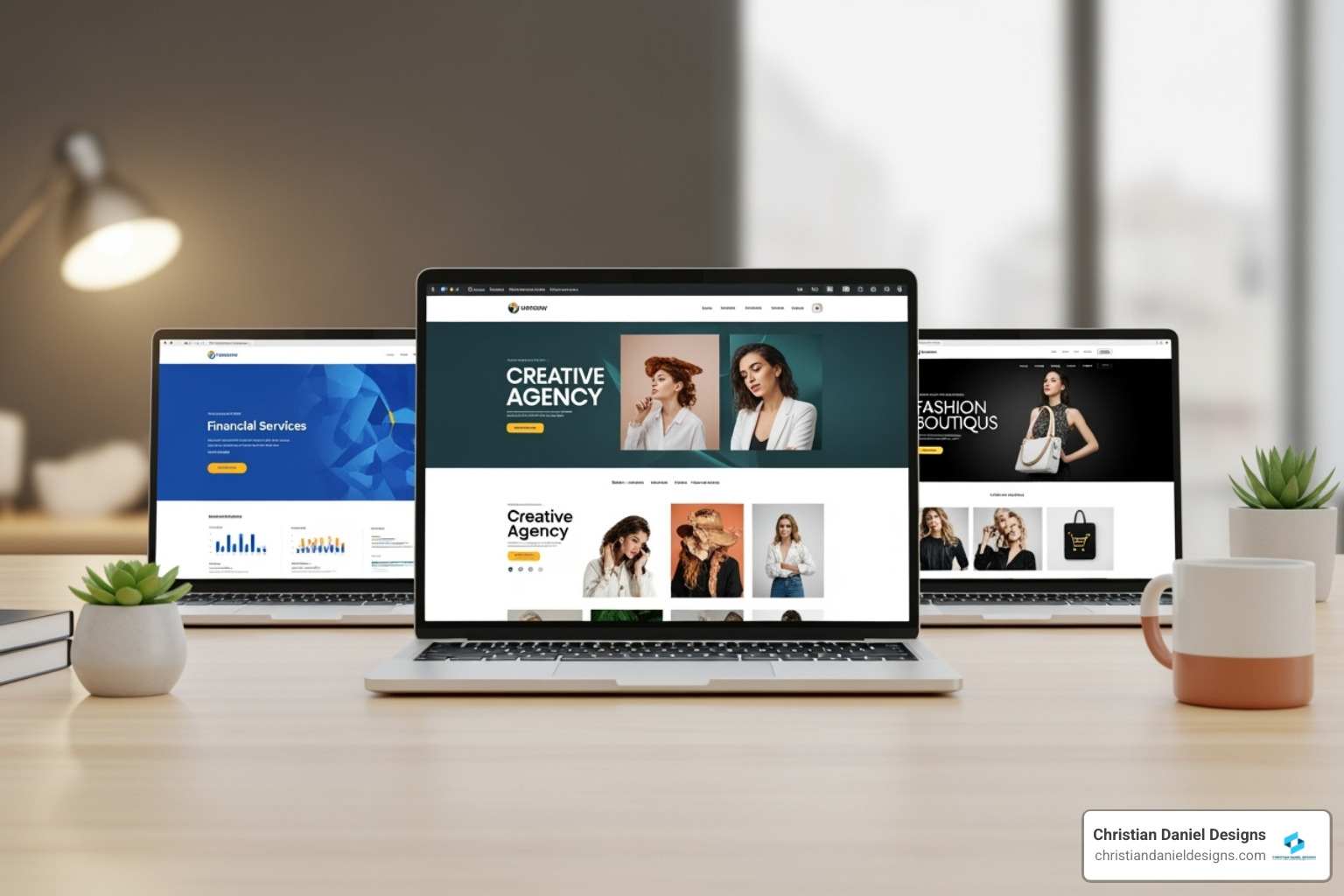
Google’s mobile-first indexing means it judges your entire site based on its mobile version. With over 59% of global web traffic coming from mobile devices, a poor mobile experience will hurt your search rankings and your bottom line. That’s why I design for mobile first, then adapt for larger screens. I focus heavily on Core Web Vitals—Google’s metrics for speed, responsiveness, and stability—to ensure a fast, smooth experience for every user. My approach treats Mobile Optimization not as an afterthought, but as the primary consideration.
The Critical Importance of Responsive Design
Responsive design ensures your website looks and functions beautifully on any screen, from a large monitor to a small phone. First introduced by Ethan Marcotte, this approach uses a flexible system that adapts automatically, which is crucial since over 60% of website visits are on mobile.
I build responsive website designs using three core techniques: fluid grids that use proportions instead of fixed pixels, flexible images that scale automatically, and media queries that apply different styles based on screen size. This is essential for both user experience and SEO, as Google prioritizes mobile-optimized sites. Learn more in my guide on Responsive Website Design.
How to Optimize Your Website Designs for Search Engines (SEO)
A beautiful website is useless if no one can find it. That’s why I integrate SEO into my website designs from day one. Design and SEO are deeply intertwined.
My SEO focus includes:
- Page Speed: I optimize every element to ensure your site loads in under three seconds. Sites loading in 2 seconds see 7x more conversions.
- Image Alt Text: This makes your site accessible and tells search engines what your images are about, helping you rank in image searches.
- Header Tags (H1, H2, H3): A clear hierarchy makes content scannable for users and understandable for search engines.
- Clean URL Structure: A readable URL like
.../custom-wedding-cakesis better for both users and SEO than.../page?id=123. - Internal Linking: This guides users and search engines through your site, distributing authority to your most important pages.
- Meta Descriptions: This is your sales pitch in search results. A compelling description improves click-through rates.
My goal is to get your site in front of the right people. For a deeper look, check out my guide on How to Get Your Web Page First on Google.
Frequently Asked Questions about Website Design
After 20 years of designing websites, I’ve heard just about every question imaginable. Here are the most common ones, answered with the insights I’ve gained from two decades in the business.
How much does a website design cost?
This is the most common question, and the answer is: it depends. The cost of website designs is influenced by complexity and features. A simple brochure site will cost less than a large e-commerce store with custom integrations. Whether I build a fully custom design or customize a template also affects the price.
My 20+ years of experience ensures your investment delivers a strong ROI. My pricing is transparent, typically including a one-time fee for the design and build, plus any ongoing costs for hosting and maintenance. As a direct collaborator, I offer exceptional value compared to larger agencies, ensuring your budget translates into tangible business growth.
How long does it take to design a website?
Timelines also vary with project scope. A small business website might take 4-6 weeks, while a more complex project could take 8-12 weeks or more. The single biggest factor that influences the timeline is content availability. If you have your text, images, and videos ready when I start, the process moves much faster. Your timely feedback during the design and review phases is also crucial for keeping the project on schedule.
What is the difference between UX and UI design?
This is a common point of confusion. Think of it this way: UX is the car’s engine and performance; UI is the dashboard and paint job. Both are critical for successful website designs.
-
User Experience (UX) Design is about the overall feeling a user has. It’s the entire journey—how easy and enjoyable it is to use your site and achieve a goal. When a site feels intuitive, that’s good UX.
-
User Interface (UI) Design is about the specific visuals and controls the user interacts with—the buttons, typography, colors, and layout. When a site looks gorgeous, that’s good UI.
A beautiful UI with poor UX will frustrate users. A great UX with a terrible UI will look unprofessional. I blend both seamlessly to create websites that are both a joy to use and beautiful to look at.
Conclusion
I’ve covered a lot of ground, from the foundational elements of website designs to the trends and tools that shape the modern web. The most important takeaway is this: great design is not just about aesthetics. It’s a strategic business tool that builds trust, drives growth, and creates lasting connections with your audience. Your website is your 24/7 salesperson and brand ambassador; it needs to be your hardest-working asset.
I know that navigating the complexities of web design—choosing platforms, optimizing for mobile and SEO, and keeping up with trends—can feel overwhelming. That’s why partnering with an expert who understands both the artistic vision and the business strategy is so important.
With over 20 years of experience creating website designs for hospitality and creative businesses, I blend visual storytelling with measurable impact. I’m committed to direct collaboration, working with you one-on-one to create a site that delivers real results. Your brand deserves a custom website that stands out and turns visitors into loyal customers.
Ready to lift your brand with a website that works as hard as you do? Contact me to get started. I look forward to building something remarkable with you.
